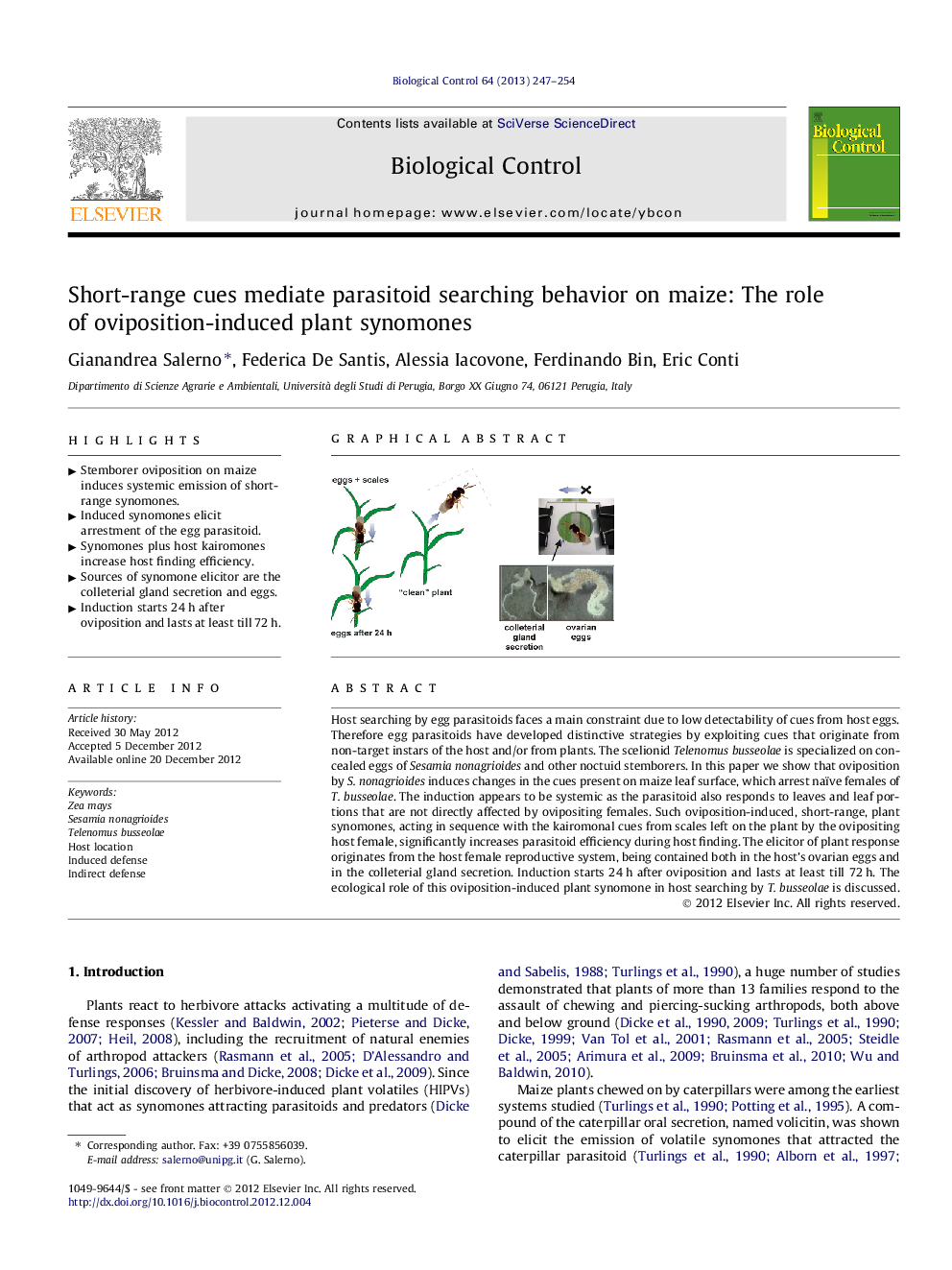| Article ID | Journal | Published Year | Pages | File Type |
|---|---|---|---|---|
| 6372788 | Biological Control | 2013 | 8 Pages |
Host searching by egg parasitoids faces a main constraint due to low detectability of cues from host eggs. Therefore egg parasitoids have developed distinctive strategies by exploiting cues that originate from non-target instars of the host and/or from plants. The scelionid Telenomus busseolae is specialized on concealed eggs of Sesamia nonagrioides and other noctuid stemborers. In this paper we show that oviposition by S. nonagrioides induces changes in the cues present on maize leaf surface, which arrest naïve females of T. busseolae. The induction appears to be systemic as the parasitoid also responds to leaves and leaf portions that are not directly affected by ovipositing females. Such oviposition-induced, short-range, plant synomones, acting in sequence with the kairomonal cues from scales left on the plant by the ovipositing host female, significantly increases parasitoid efficiency during host finding. The elicitor of plant response originates from the host female reproductive system, being contained both in the host's ovarian eggs and in the colleterial gland secretion. Induction starts 24Â h after oviposition and lasts at least till 72Â h. The ecological role of this oviposition-induced plant synomone in host searching by T. busseolae is discussed.
Graphical abstractDownload full-size imageHighlights⺠Stemborer oviposition on maize induces systemic emission of short-range synomones. ⺠Induced synomones elicit arrestment of the egg parasitoid. ⺠Synomones plus host kairomones increase host finding efficiency. ⺠Sources of synomone elicitor are the colleterial gland secretion and eggs. ⺠Induction starts 24 h after oviposition and lasts at least till 72 h.
